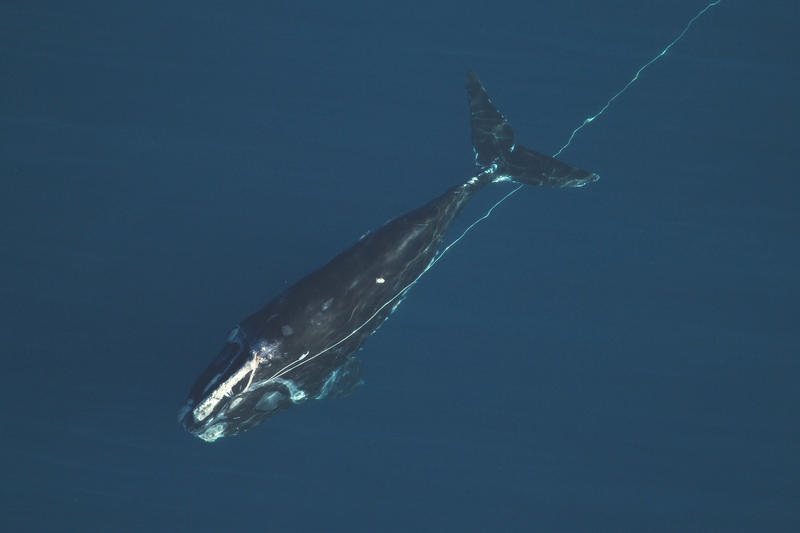As Right Whale Population Plummets, Focus Turns To Their Falling Birth Rates

A 4-year-old right whale entangled in heavy fishing rope 40 miles east of Jacksonville, Florida, in Feb. 2014. Photo courtesy of the Florida Fish and Wildlife Conservation Commission, taken under NOAA Research Permit #15488
For many decades, the North Atlantic right whale was a conservation success story. After being hunted to near extinction, a series of protective actions that began in the 1930s, and accelerated in the 1960s, helped the population begin to rebound.
But in 2010, something changed. Since then, the number of North Atlantic right whales has started to decrease again. Last year was particularly bad; 17 bloated carcasses washed up on beaches along the East Coast, many of which were marred by scars from boat strikes and fishing gear.
With approximately 450 of these whales left, every death is a big deal. In fact, experts predict if the current trend holds, the species, which plays an important role in the marine ecosystem, will be extinct by 2040.
Yet, while much attention has been paid to mortalities, far less attention has been paid to what some biologists say is the whale’s real long-term problem: plummeting birth rates.
At its most basic level, population comes down to arithmetic. It’s a matter of births minus deaths, says Charles “Stormy” Mayo, director of the right whale ecology program at the Center for Coastal Studies in Provincetown.
“If a species doesn’t reproduce, eventually it’s gone,” Mayo says. “So the business of low calving is, I think, as horrific an issue as the mortality.”
This year, of the 71 females who were theoretically able to calve, none did. That’s according to Heather Pettis, executive administrator of the North Atlantic Right Whale Consortium and associate scientist at the Anderson Cabot Center for Ocean Life at the New England Aquarium. She says the last few years haven’t been much better.
“Right whales are in a quite precarious situation right now,” Pettis says. “We’ve seen variable reproduction over the years, but nothing like what we’ve seen this year.”
There are likely many interconnected reasons for declining birth rates. But in the last year or two, as biologists have noticed that the whales aren’t going to their normal feeding grounds, a new theory has emerged, and at its center are two key factors: nutrition and stress.
